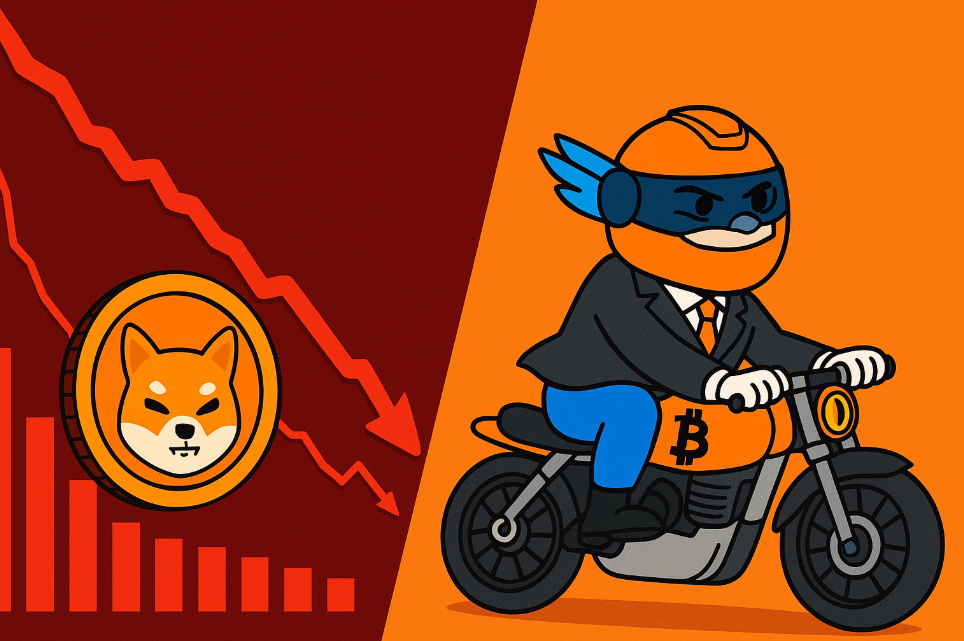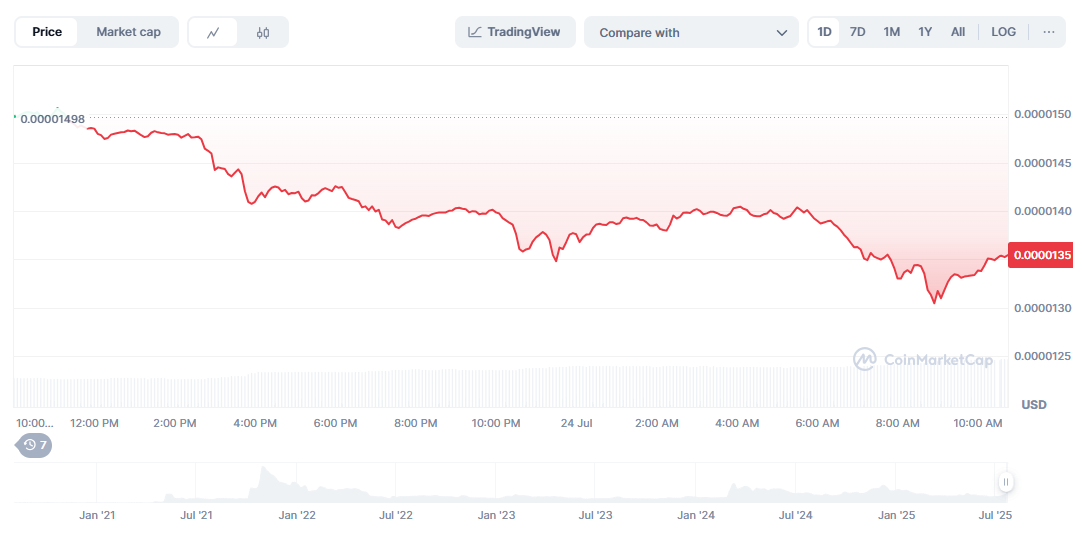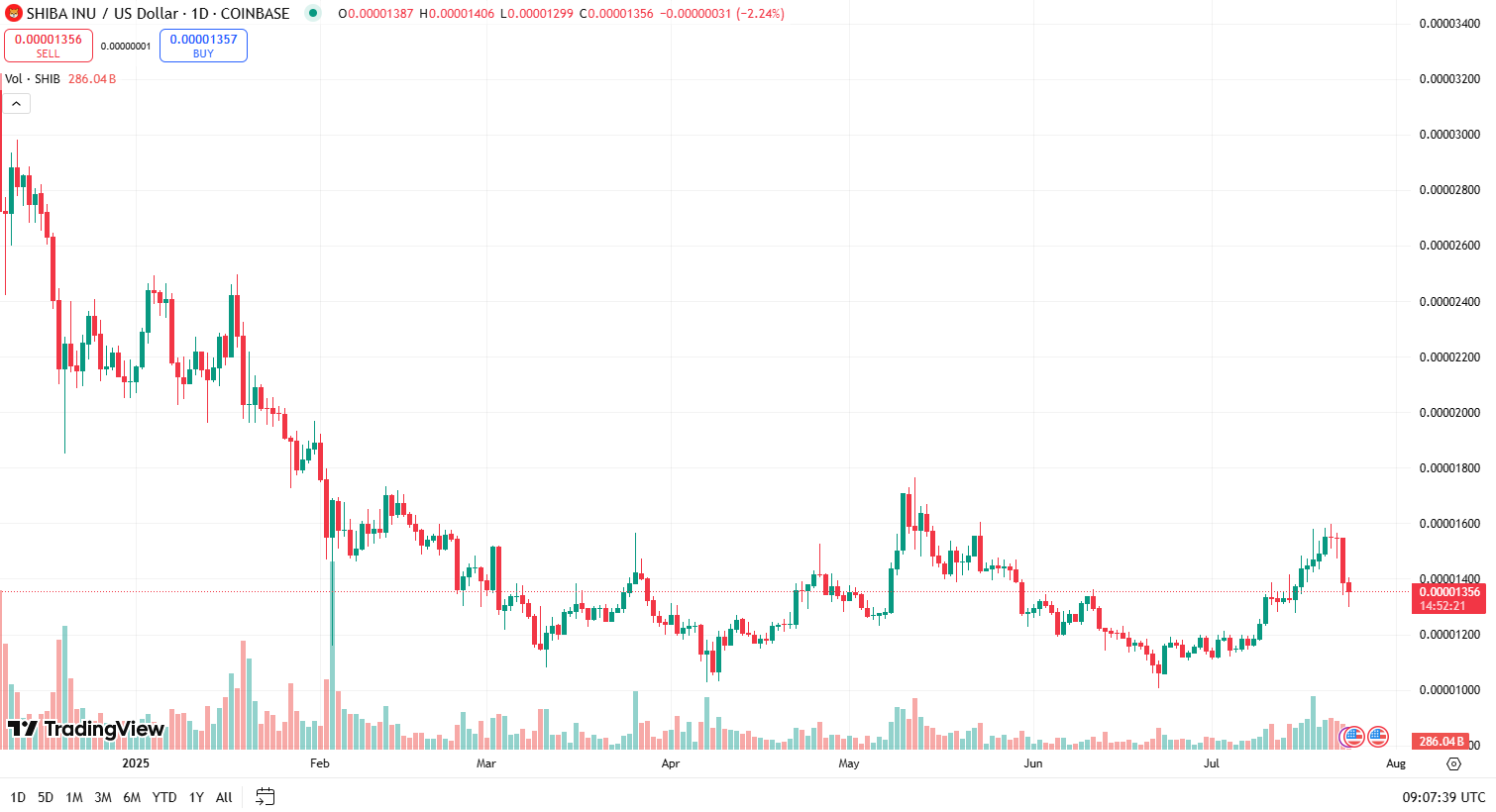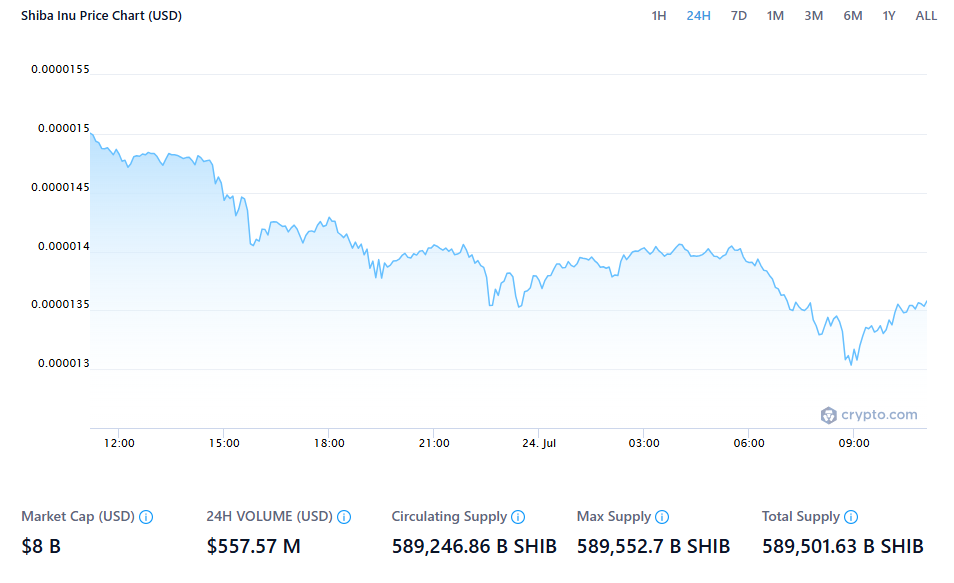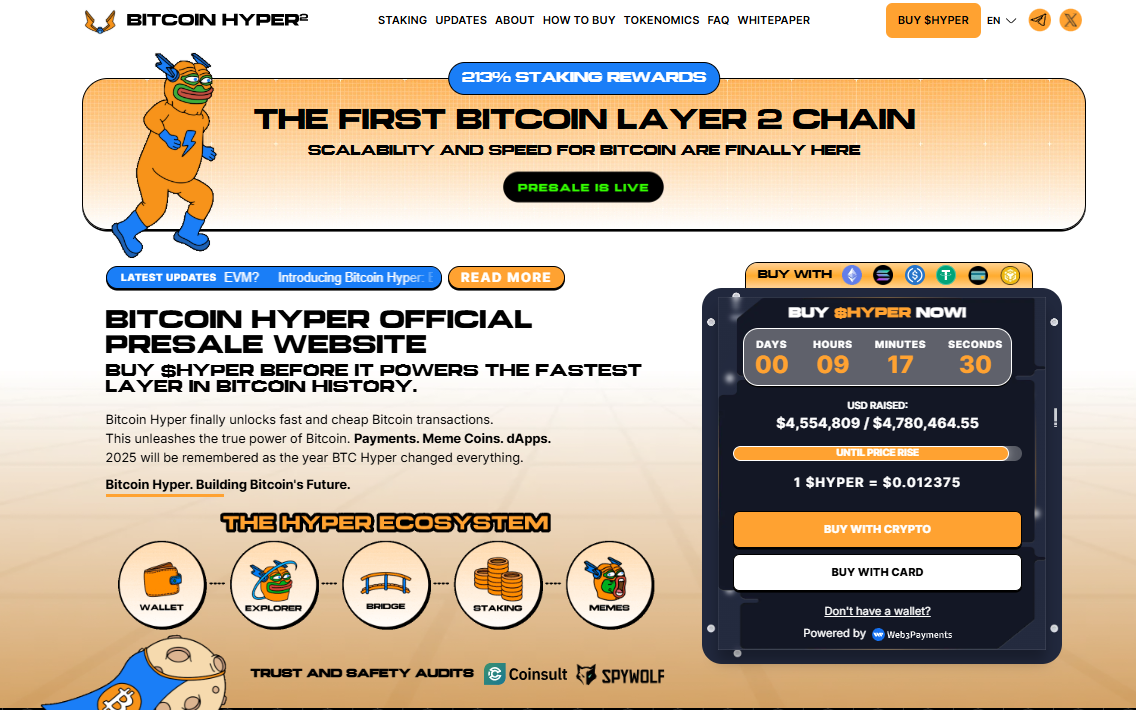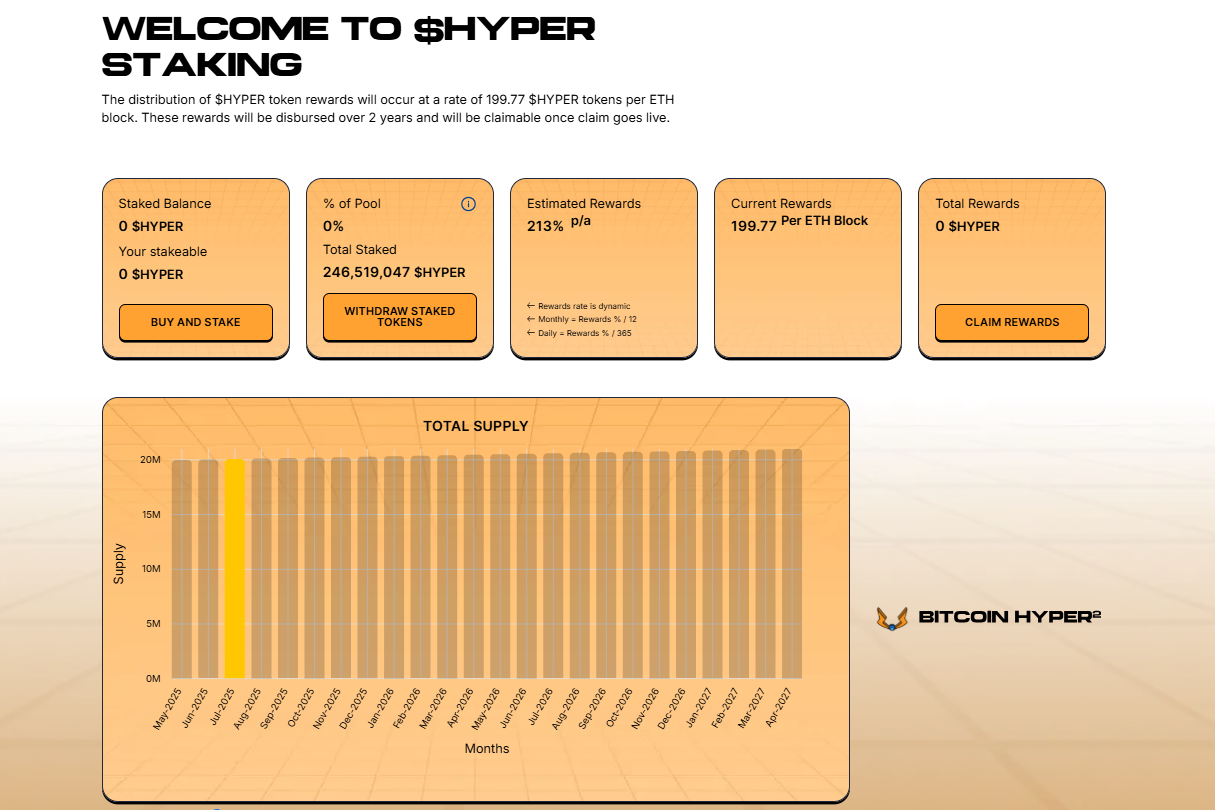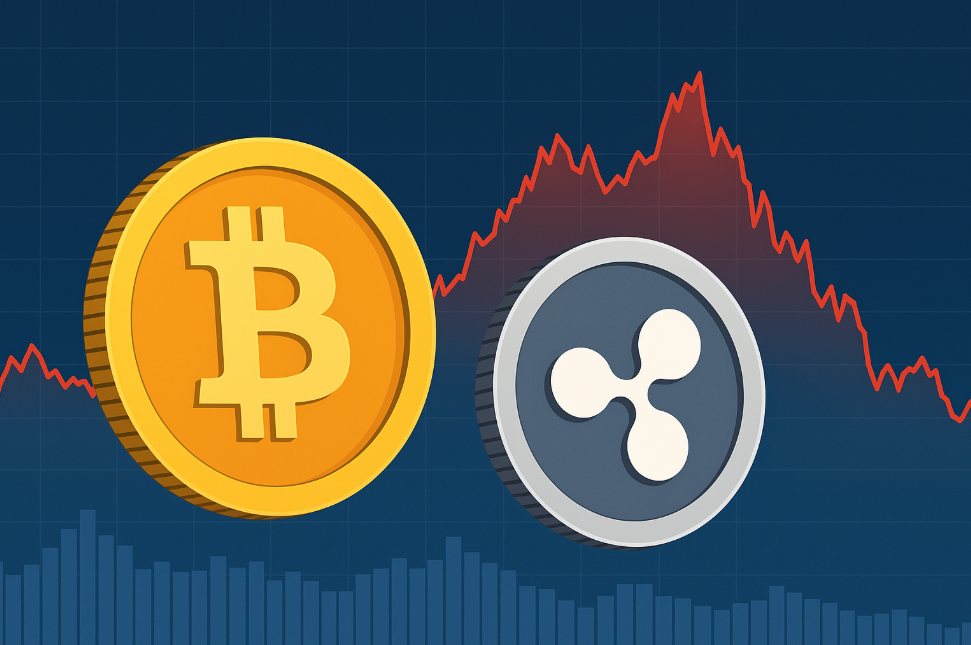Shiba Inu (SHIB) dropped sharply over the past 24 hours, sliding 9.9% to $0.00001353 amid heavy selling pressure and failed support tests, raising questions about whether it’s losing momentum to the next crypto to explode.
The move wiped nearly $900 million from its market cap, now standing at $7.97 billion.
Technical charts show a steep decline from $0.00001589, breaking below multiple support zones and the 200-day simple moving average.
Trading volume surged, with over 4.33 trillion SHIB exchanged in a single session. Despite a brief recovery, SHIB failed to reclaim the key $0.00001420 level.
As the meme token struggles to regain momentum, some traders are turning to early-stage projects like Bitcoin Hyper, which just raised over $4.5 million in presale funding.
With its focus on Bitcoin Layer-2 scalability and DeFi integration, Bitcoin Hyper is gaining traction as the next crypto to explode.
SHIB Struggles After Key Resistance Break
SHIB opened at $0.00001589 before tumbling nearly 10% in less than 24 hours.
The initial decline was triggered by a rejection at the $0.00001546 resistance level on July 22, followed by intensified selloffs around $0.00001420.
A single candle at 13:44 UTC showed 343 billion tokens traded, marking the session’s lowest price at $0.00001406.
Technical indicators show SHIB dropping well below its 200-day SMA, while also slipping through the Ichimoku cloud – both signs of a bearish structure.
Analysts say unless SHIB closes above $0.00001520 again, the downtrend may continue.
Price support at $0.00001420 was tested multiple times but failed to hold.
During the steepest selloff, SHIB fell from $0.00001477 to $0.00001403 on massive volume, breaching $0.00001400 and $0.00001395 in quick succession.
The token staged a minor bounce but couldn’t push past $0.00001420, establishing this as a strong resistance.
SHIB’s fall is not isolated – it reflects broader hesitation across meme tokens. Global economic pressures, low risk appetite, and fading hype cycles are taking their toll.
Meanwhile, institutional sentiment around SHIB has cooled, with fewer high-volume accumulation signals than earlier in July.
This opens the door for new projects with clearer roadmaps and early traction, particularly in the Bitcoin ecosystem.
Bitcoin Hyper: Could It Be the Next Crypto to Explode?
As SHIB falters, attention is shifting to Bitcoin Hyper ($HYPER), a rising presale token that’s quietly making waves.
It just crossed $4.5 million raised, with over $100,000 pouring in daily from investors and whales.
At a current price of $0.012375, $HYPER is still in an early-stage window.
One investor recently purchased 751,000 tokens ($9,200), while another scooped 784,000 ($9,700) – both within the past 24 hours.
Just last week, a whale spent over $17,000 on a 1.4 million token buy.
Bitcoin Hyper is building a Layer-2 solution for Bitcoin using Solana’s SVM and a Canonical Bridge.
This allows users to deposit BTC and receive wrapped tokens (wBTC) that operate within the Hyper network.
Smart contracts, fast payments, and full DeFi capabilities are now possible – something even the Lightning Network can’t offer.
Staking Rewards, Roadmap, and Supply Cap Attract Early Investors
Bitcoin Hyper features a capped supply of 21 billion tokens, aligning itself with Bitcoin’s deflationary narrative and scarcity-driven appeal.
This fixed limit is designed to instill long-term value and resist inflation, a core philosophy that resonates with many BTC-aligned investors.
One of the most attractive features for early participants is the staking system, which currently offers yields of up to 221% APY.
These high returns have already begun to attract yield seekers and presale participants looking for both utility and passive income potential.
The project’s roadmap lays out an ambitious timeline for growth.
The update marked a key turning point in the token’s early growth phase, signaling rising demand ahead of its next price tier.
In Q3, Bitcoin Hyper plans to launch its Canonical Bridge, a key infrastructure component that will allow seamless movement of wrapped Bitcoin into the network.
This will coincide with the rollout of the first decentralized applications built on the Hyper chain.
By Q4, the team expects to secure listings on centralized exchanges, launch a developer toolkit, and push its public testnet live.
Looking further ahead, full DAO governance is expected to go live in early 2026, giving the community direct control over upgrades and protocol decisions.

